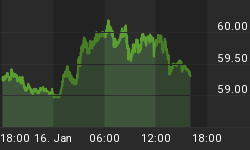Although aware of all traps of high-interest credit card debt, Americans continue to ignore the existing pile-up and keep putting more and more on plastic—skyrocketing interest be damned.
According to Experian, credit card debt jumped 2.7 percent since last year, with average balance on those cards of $6,354 in 2017.
Reaching the highest point since the Great Recession, total credit card debt surpassed $1 trillion in 2017, according to a Federal Reserve report. Consumers took on an additional $92.2 billion in debt last year, the highest single-year amount since 2007.
The average U.S. household owes $8,600 on credit cards, according to a study by WalletHub, a personal finance website.
While this wasteful spending may be a boon for the economy, taking on credit card debt that isn't immediately paid is a solid sign that Americans are facing significant financial problems. As economic satisfaction increases, "consumers are more comfortable spending and confident they can manage any new debt," said Rod Griffin, Experian's director of public education, adding that good credit card management boils down to making payments on time and not buying things you otherwise can't afford.
"Ride the wave, don't fall off the surfboard, that's the trick," Griffin said.
Credit card delinquency rates rose to 1.78 percent in the first quarter this year, higher than the 1.77 percent five years earlier, according to TransUnion. Related: Where To Look As The Treasury Bond Bull Run Loses Steam
The Federal Reserve was keeping interest rates near zero for years, encouraging Americans to borrow and spend more. Now with the rise of interest rate there is a simultaneous rise of borrowers who make payments more than 30 days late.
"That stands in stark contrast to the trend in delinquency rates on other forms of lending, which are either flat or falling," Business Insider cited Michael Pearce, a senior US economist at Capital Economics, as saying. That is in part because the increase in interest rates has been higher for credit card lending, and that means more families are now struggling to pay down their debt.
It might not sound ominous when you consider the Federal Reserve Bank of New York data showing that the number of credit inquiries within the past six months fell in the first quarter to a record low.
Or, indeed, when you consider that all said and done, credit card debt really only represents less than one-tenth of the mortgage market or less than 10 percent of disposable income, according to Pearce. Still, the bigger picture is cause for concern, he told media: “[…] With broader market interest rates now rising sharply, too, the rise in credit card delinquencies is a sign of things to come.”
And borrowers are in trouble. Late payments reported to credit bureaus account for more than one-third of a credit score, and the lower the credit score, the higher the interest rate offered.
Matt Schulz, senior industry analyst at CreditCards.com, told NBC he wasn't surprised "that people are struggling to pay their bills because, realistically, there’s only so much credit card debt Americans can take on without serious problems and nobody has quite known what that tipping point is — but it’s pretty clear that we’re not all that far from it."
Related: The U.S. Dollar Is Set To Continue Its Rally
According to a survey by the National Foundation for Credit Counseling (NFCC), women aged 18 to 34 saw the greatest increase in late- and non-payments, with nearly 40 percent saying they fail to make payments on time.
“We’ve known for some time that millennials and, specifically, millennial women continue to face unique financial challenges,” NBC cited NFCC spokesman Bruce McClary as saying.
This also means that debt collection is getting more serious, and the cost of servicing debt threatens to spiral out of control with fees, penalty interest rates and all of it compounding daily.
WalletHub’s survey showed that 13 percent of people with credit card debt do not remember how they got into debt.
By Josh Owens for Safehaven.com
More Top Reads From Safehaven.com:

















